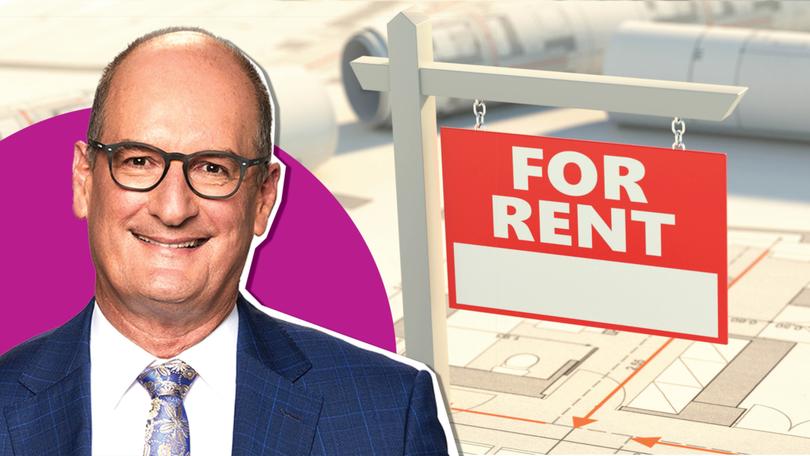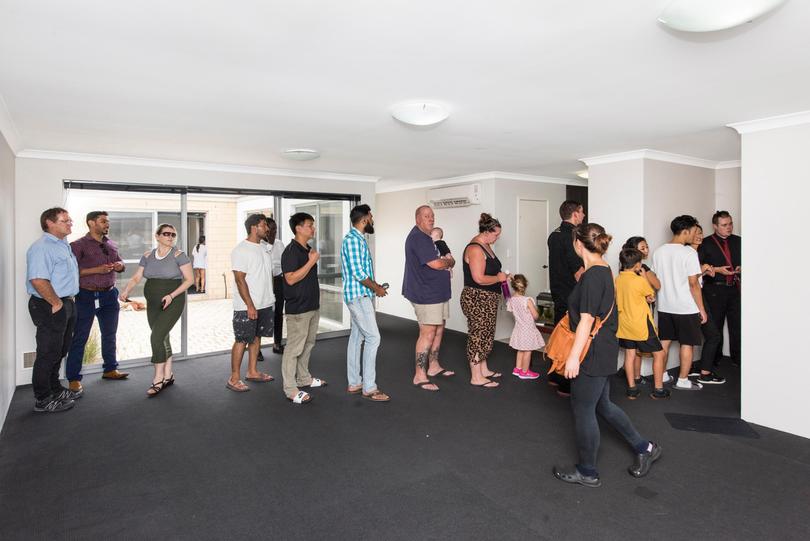DAVID KOCH: Poor government planning not landlords to blame for rental crisis

Love your landlord. I know that sounds like heresy but tenants should direct their anger towards all three levels of government — not their landlords — when it comes to skyrocketing rents.
Governments, not landlords, have been derelict in not foreseeing and planning to avoid this rental crisis.
It’s complex and there is no silver bullet solution. But so-called “greedy” landlords are being unfairly targeted as the scapegoat.
Sign up to The Nightly's newsletters.
Get the first look at the digital newspaper, curated daily stories and breaking headlines delivered to your inbox.
By continuing you agree to our Terms and Privacy Policy.You probably have one in your family, or among your friends, and I bet they have increased the rent to cover rising loan repayments. But vilifying property investors is going to make the crisis a whole lot worse.
The reality is many of those landlords are now saying it’s simply not worth it and are selling up, which just adds to the problem.
Data from the Australian Tax Office shows there are 2.2 million landlords in Australia. That is 20 per cent of the population. Just over 71 per cent own just one investment property and 19 per cent own two. They aren’t property moguls, they’re ordinary Australians trying to build a nest egg.
And while 12 per cent of these property investors are 65-74, the others are spread pretty evenly across all other age groups.
The reason rents are going up is not greed, but a combination of rising interest rates; a lack of new developments because of a shortage of land; delays in approvals; banks reducing borrowing capacity; and developers going broke.
Added to this is a lack of commitment from governments to develop enough affordable low-cost rental housing.
When it’s all said and done, the supply of rental property depends on investors buying a property and then renting it out. For that to happen the property must make a return to make it worthwhile for the investor to choose property over shares, term deposits, or any other alternative.
When it’s not worthwhile, investors go somewhere else (as is their right to do so) and put their money where there are better returns or less hassle. And that just adds to the crisis.
Unfortunately, that is exactly what’s happening.

The ninth sentiment survey by Property Investment Professionals of Australia shows a recent surge in the sale of rental dwellings.
Twelve per cent of investors sold one or more of their rental properties in the past 12 months while 17 per cent of investors had sold at least one property in the previous two years.
There are roughly 2.4 million investment properties up for rent but that number is being slashed rather than increased.
Property investors cited the following as major reasons for selling over the past year: governments increasing or threatening to increase taxes, duties, and levies (47 per cent); changing tenancy legislation (43 per cent); talk of rental freezes (35 per cent); rental increase limits or caps (28 per cent).
Other reasons were rising interest rates and higher loan repayment costs (40 per cent), negative cash flow due to higher mortgage costs (23 per cent), a need to reduce total borrowings (33 per cent), or offloading an underperforming asset (19 per cent).
The only way to quickly resolve the rental crisis is to love your landlord and encourage more property investors to make more stock available. So when debating the merits of negative gearing, be careful what you wish for.
Between 1996 and 2021, private investors provided 1.1 million rentals. Community groups added 41,000 but there was a reduction of 53,000 in government properties.
Rather than castigate landlords, governments should be trying to match them in the amount of new properties coming onto the market.
The Federal Government’s much-vaunted $10 billion Housing Australia Future Fund will only provide an additional 30,000 social and affordable homes which is tiny compared with what is needed.
So private investors will have to continue to do the heavy lifting.
This lack of commitment from governments to solve the rental crisis has been happening for decades and we’ve been shockingly negligent compared to the rest of the world.

France and Germany, for example, have maintained rental affordability because they build a lot of homes relative to population growth while Australia has underbuilt. It’s the basic supply and demand principle.
Historically, State governments have also supplied rental housing, but this has been reducing steadily over the past 20 years.
Foreign investors were also big suppliers of rental properties until public opinion turned on them and governments made it difficult to invest by imposing additional taxes and tightening ownership restrictions, particularly on Chinese investors.
Naturally, those investors went elsewhere, and the rental crisis compounded even further.
Taxation systems should be reviewed regularly but the process needs to be done slowly and carefully and this is particularly the case for negative gearing. We have relied on it for a long time to ensure enough rental properties and for the most part, it has worked.
More immediately, we need to focus on building enough homes. Similarly, a push to move to a land tax system to prevent homes being under utilised or simply left vacant should be encouraged. A sharper focus should also be made on providing affordable homes to those that really need it.
